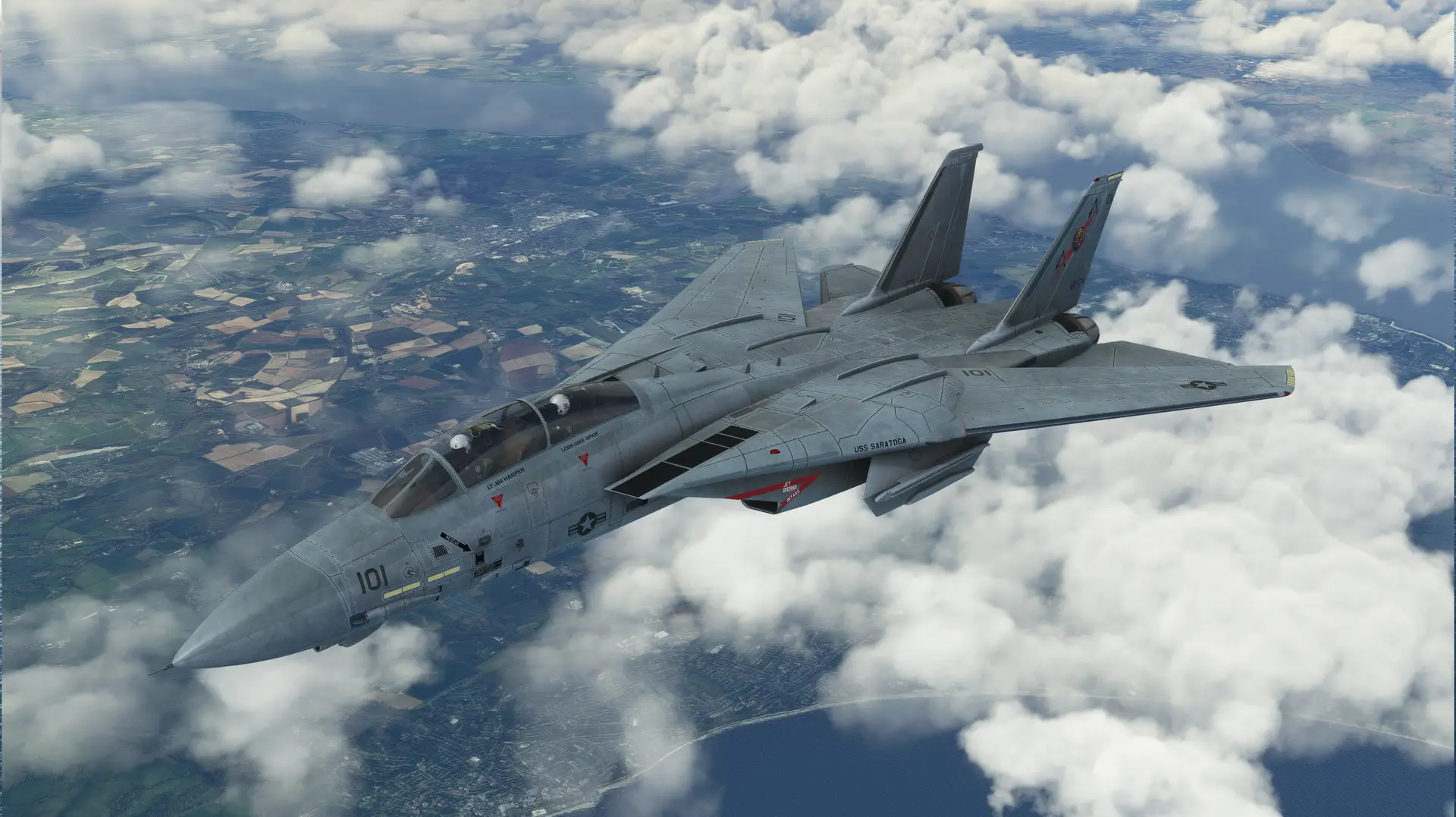- USD 34.99
- -48%
- USD 34.99
- USD 17.99
- Sale Ends: July 10 2025 5:00 PM +00:00
- View more offers at FS Addon Compare
- Added: August 19, 2021
- Updated: April 3, 2025
DC Designs are delighted to present to you the F-14A, F-14B and F-14D Tomcats for Microsoft Flight Simulator.
All models have been coded with Microsoft Flight Simulator native 'Model Behaviors' animations and built to MSFS operational specifications to prevent issues with future simulator upgrades. All custom cockpit instruments and screens are coded in HTML for native, high-performance display in MSFS The Tomcats make use of the new simulator's features such as effects and sounds, fully reflective glass, native aerodynamic sound structures, the new 'Modern' aerodynamics system with the ability to provoke 'departure spins', and customised visibility controls for wheel chocks, covers, tie-down chains and GPU The Tomcats also contain custom-built and animated effects such as afterburners Full compressor-stall engine modelling and coding for the F-14A TF-30 engines Other features include authentic cockpit night lighting with brightness controls, which includes user-operated 'slime lights' for combat operations, and custom-coded manoeuvring flaps, slats and intake ramps, all based on aircraft airspeed and angle of attack Numerous external animations including canopy, crew ladders, tail hook and control surfaces The F-14 Tomcats are fully compliant with Virtual Reality headsets Full custom sound sets for both the TF-30-powered F-14A Tomcat and the GE-F110-powered F-14B and D Tomcats
Truly 3D virtual cockpits for all variants featuring accurately modelled ejector seats, controls and detailed texturing All analogue instruments constructed in 3D with smooth animations Reflective rear-view mirrors Scratched canopy' glass effects, reflective glass, icing and rain effects Crew figures in the virtual cockpit are coded to disappear when you occupy their seats Front and rear cockpit positions included in all variants Fully customisable crew helmets, names, flight suit patches and even faces Aircraft systems
3D modelled dials, ADI, 'whiskey' compass and other high-detail instruments designed to emulate the appearance of the real F-14 Tomcat Display screens with visual layouts based on the real aircraft's systems (within the confines of MSFS' current capability) Head-Up Display with authentic layout based on the real F-14A, B and D models respectively
F-14 Tomcat systems include Direct Lift Control and CADC system
Paint schemes
F-14A liveries
VF-1 VF-2 VF-24 VF-31 VF-41 VF-51 VF-84 VF-111 VF-124 VF-142
F-14B liveries
FLIRCAT USNFWS VF-32 VF-143 VF-74 VF-101 VF-102 VF-103 VF-143 VF-213
F-14D Tomcat liveries
VF-2 VF-31 VF-101 VF-124 VF-213





